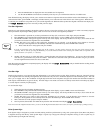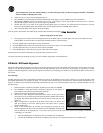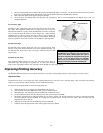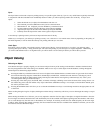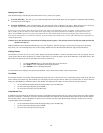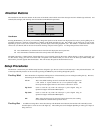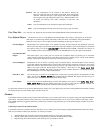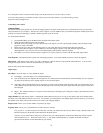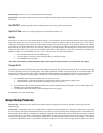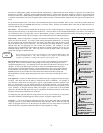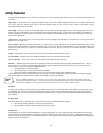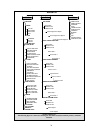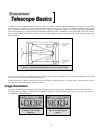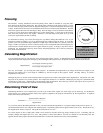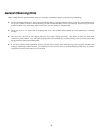Exposure Delay- Allows you to set a time delay between each exposure.
Sequence End - The Sequence End option lets you select whether the imaging sequence should repeat indefinitely or stop once it reaches
the last entry.
Get
RA/DEC
-
Get RA/DEC - Displays the right ascension and declination for the current position of the telescope.
Goto
R.A/
Dec
Goto R.A/ Dec - Allows you to input a specific R.A. and declination and slew to it.
I
I
d
d
e
e
n
n
t
t
i
i
f
f
y
y
Identify Mode will search any of the NexStar database catalogs or lists and display the name and offset distances to the nearest matching
objects. This feature can serve two purposes. First, it can be used to identify an unknown object in the field of view of your eyepiece.
Additionally, Identify Mode can be used to find other celestial objects that are close to the objects you are currently observing. For example,
if your telescope is pointed at the brightest star in the constellation Lyra, choosing Identify and then searching the Named Star catalog will no
doubt return the star Vega as the star you are observing. However, by selecting Identify and searching by the Named Object or Messier
catalogs, the hand control will let you know that the Ring Nebula (M57) is approximately 6° from your current position. Searching the
Double Star catalog will reveal that Epsilon Lyrae is only 1° away from Vega. To use the Identify feature:
• Press the Menu button and select the Identify option.
• Use the Up/Down scroll keys to select the catalog that you would like to search.
• Press ENTER to begin the search.
Note: Some of the databases contain thousands of objects, and can therefore take a minute or two to return the closest object.
P
P
r
r
e
e
c
c
i
i
s
s
e
e
G
G
o
o
T
T
o
o
The NexStar has a precise goto function that can assist in finding extremely faint objects and centering objects closer to the center of the field
of view for high power viewing or astrophotography. Precise Goto automatically searches out the closest bright star to the desired object and
asks the user to carefully center it in the eyepiece. The hand control then calculates the small difference between its goto position and its
centered position. Using this offset, the telescope will then slew to the desired object with enhanced accuracy. To use Precise Goto:
1. Press the MENU button and use the Up/Down keys to select Precise Goto.
• Choose Database to select the object that you want to observe from any of the database catalogs listed
• Choose RA/DEC to enter a set of celestial coordinates that you wish to slew to.
2. Once the desired object is selected, the hand control will search out and display the closest bright star to your desired object. Press
ENTER to slew to the bright alignment star.
3. Use the direction buttons to carefully center the alignment star in the eyepiece.
Press ENTER to slew to the desired object.
S
S
c
c
o
o
p
p
e
e
S
S
e
e
t
t
u
u
p
p
F
F
e
e
a
a
t
t
u
u
r
r
e
e
s
s
Setup Time-Site
- Allows the user to customize the NexStar display by changing time and location parameters (such as time zone and
daylight savings).
Anti-backlash – All mechanical gears have a certain amount of backlash or play between the gears. This play is evident by how long it takes
for a star to move in the eyepiece when the hand control arrow buttons are pressed (especially when changing directions). The NexStar's anti-
backlash features allows the user to compensate for backlash by inputting a value which quickly rewinds the motors just enough to eliminate
the play between gears. The amount of compensation needed depends on the slewing rate selected; the slower the slewing rate the longer it
will take for the star to appear to move in the eyepiece. Therefore, the anti-backlash compensation will have to be set higher. You will need
to experiment with different values; a value between 20 and 50 is usually best for most visual observing, whereas a higher value may be
22



